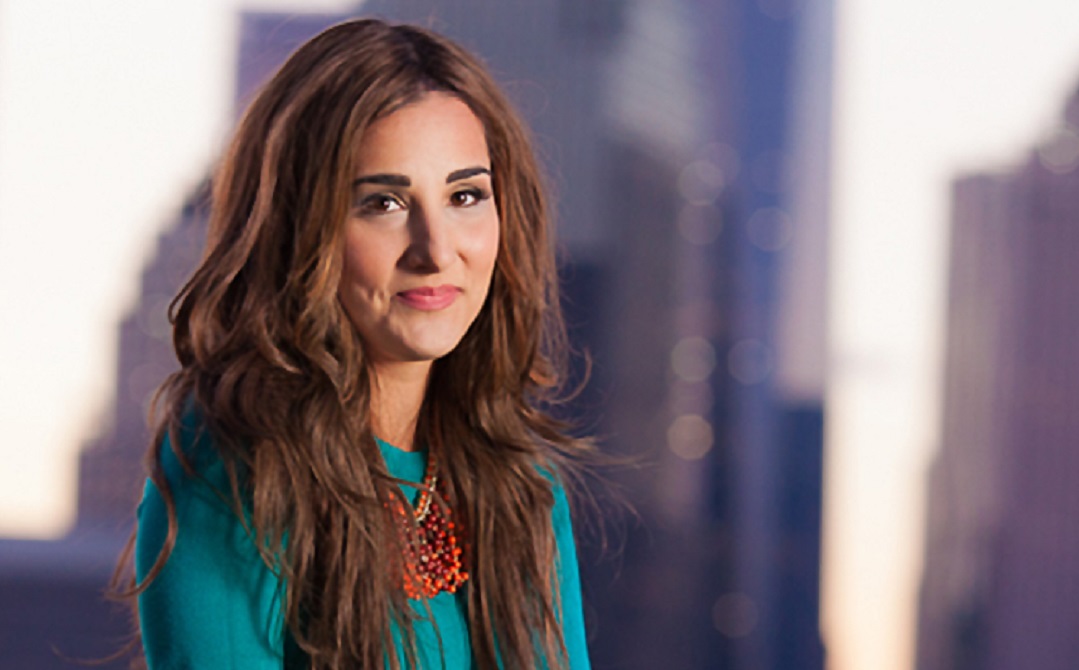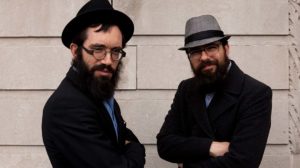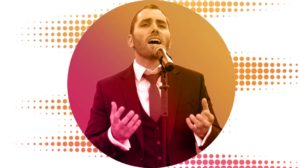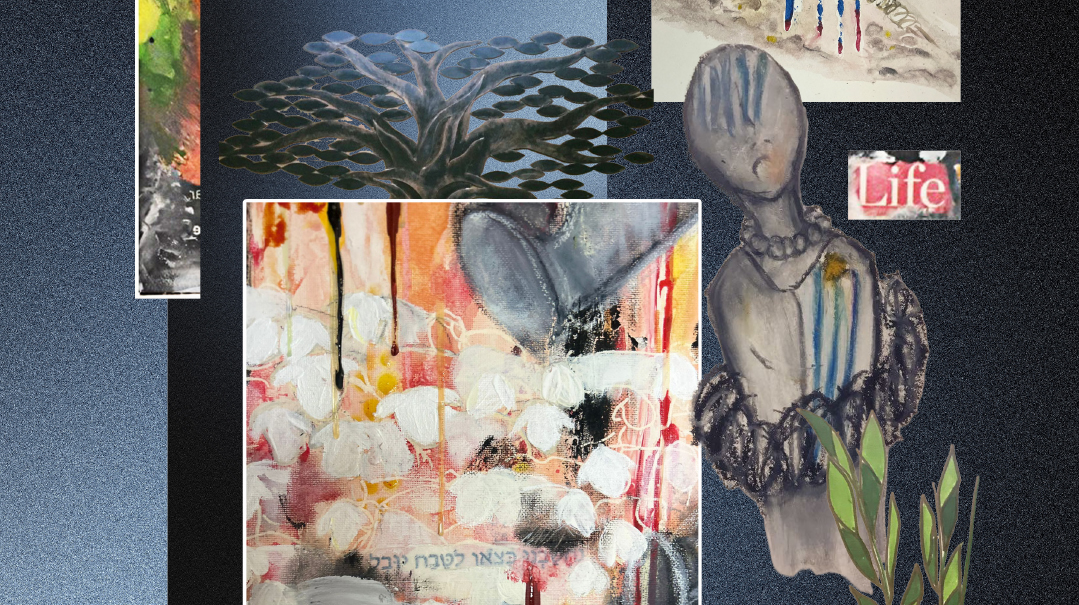On Your Mark with Allison Josephs

Too many people never saw Torah’s beauty. Allison Josephs helps them discover it

Meet
Allison Josephs launched Jew in the City and its initiative, Project Makom, an outreach organization that works to reverse negative associations of frum Jews.

More than gefilte fish
I was raised as a proud secular Jew. I didn’t know any frum Jews personally; all I knew about them were the rumors that swirled around society and what I saw in the headlines or on TV. I thought frum Jews were backward — misogynistic, fanatic, stuck in the past. I was proud to be part of Klal Yisrael but thought that observant Jews took it too far.
When I was eight, there was a kid in my school who was murdered by her father — the man went crazy and killed himself and his two children. My parents had raised my two sisters and me in a very happy home with lots of privileges. But when this triple murder occurred, I realized that nothing I’m doing matters, everything will be gone one day. What was the point of it all?
So there I was, eight years old, launched into an existential crisis. I had no idea there was any wisdom in my heritage — all I knew about was Jewish humor and gefilte fish. I knew there had to be some purpose in life, but had no idea what it was.
My parent told us that if we dated a non-Jew they’d sit shivah, but we’d eat bacon cheeseburgers. We had to marry a Jew because of the Holocaust, the pogroms… and if my mother got on a roll, she’d mention the Inquisition too. We knew the Jewish people had to go on. But we didn’t know why.
When my parents sent me to Hebrew high school, I was expecting my Orthodox teacher to be backward. But instead he was normal and relatable. He had access to a Judaism that made life rich and meaningful. I was the one missing something. I slowly started becoming religious. Everyone who saw me worried I was getting sucked into a cult. My mother, who had a frum bubbe and zeide, had some positive associations, but my father was trying to stop me. I started keeping Shabbos, I would tape the fridge light, he would untape it — this is my fridge.
I challenged my father to study Torah so he could learn enough to persuade me to drop it; he was close to 50! After about a year he came to me and said, “You were right, I was wrong.” Then he, my mother, and sisters all became observant.
Orthodoxy’s PR problem
After I got married, I started working in kiruv full time. A kiruv rabbi saw a posting on Craigslist: a Spanish journalist was seeking Orthodox women to interview. He told me to reach out. She came over the next day.
Everything she’d assumed an Orthodox Jew would be, I was the opposite: She was expecting dirty, frumpy, and outdated. I told my husband, “This is the missing link in the kiruv world. People have such wrong ideas about Orthodoxy.”
At the time, I was working for a few kiruv organizations, trying to get people through the door. Mikarvim are up against people with such misconceptions. When I worked at Partners in Torah, I spoke with over 3,000 Birthright alumni, and they all kept repeating the same wrong ideas: Orthodox women can’t work. Orthodox Jews throw garbage on irreligious people.
If you can get them through the door, you can show them nice, normal people, but most aren’t willing to enter. It was exhausting, I spent so much time chasing people down. What if we confronted the negative stereotypes head-on and showed people the other side?
I wanted to let Jews who had the wrong idea — like I once did — understand what they were missing. I wanted to publicize our rich heritage. I realized that Orthodoxy has a major PR problem — there’s a huge gap between how the rest of the world sees frum Jews and the reality.
I quit my jobs. I had no business plan and no money. I told my husband we’d need to go into debt. He told me to go for it.
And that’s how I launched Jew in the City. I started making videos that introduce people to likable frum Jews. With our videos, it’s essentially sitting down for coffee or sitting next to a stranger on a plane and changing people’s mind about what being religious means.
Are we pushing people off?
In 2014, an ex-chassidish couple came to a kiruv talk I was giving and told me that they followed JITC. I was surprised. They told me they were raised ultra-chassidish but that lifestyle was too intense for them — they couldn’t live in that society anymore, but they didn’t want to leave it all behind. Then we got interrupted.
By the time I looked up, they were gone. I felt guilty. On my way home, I started making calls, saying, “We keep hearing about people from ultra-Orthodox communities leaving frumkeit completely. But maybe there are people who still want to stay frum. Maybe they want something in between.” I kept getting the same response: “You’re going to get put in cherem. No one will fund this.” I gave up.
Nine months later, I read a blog post written by a woman who’d been raised in a very chassidish community and was trying to make it in a mainstream, non-chassidish, frum community. But she couldn’t succeed. Her son couldn’t get into school, no one invited them over. She had to pay a neighbor to play with him. After three years, she picked up and left observance. Then it hit me: We complain that people go OTD, but maybe we’re sending them there.
I wrote about all this on JITC, and said, “If you want to be a part of the solution, write in now.” I was flooded with volunteers, including an ex-chassidish woman who’d ended up more centrist. I spoke to a lot of formerly chassidish Jews. Many told me they’d wanted to stay religious.
After many of months of research, we got seed money and hit the ground running. Since then, we’ve been averaging about 100 signups per year, with no advertising. Half of our signups come in through Jew in the City. Our goal isn’t to recruit — if someone’s not searching, they’ll never find us — but to catch those who are falling out.
This is the part that’s never told in those traditional OTD accounts: The people who come to us are almost entirely trauma victims, coming from very extreme or harsh backgrounds. Abuse and dysfunction were mixed into religious practices till they can’t tell the difference between the two. And those OTD stories never mention how many people want to stay observant.
Dysfunction has become what people associate as the normative reality in the frum world. This prevents many secular Jews from exploring Yiddishkeit. Menschlichkeit, erlichkeit, seichel — when you have those, Judaism is beautiful. When you don’t, it can be forbidding. In dysfunctional homes, these crucial elements can be missing. We want to show them how it ought to be.
Learning to see love
We’re dealing with of lot of people who’ve been hurt through judgment and lack of love and nurture. In many homes, these kids weren’t told “I love you” by their parents, they weren’t hugged and kissed. A lot of this is residual trauma from the Holocaust — so many families never recovered.
We do the opposite. We shower them with love and unconditional acceptance. They can start to heal and see positivity in Yiddishkeit. It changes their perception of Hashem.
When we set them up for Shabbos (in non-pandemic times), for the first time in their lives they can see happy marriages and healthy parent-child relationships. They’re enveloped in love and warmth. They’re not judged, there are zero expectations. This remakes their perception of themselves and Judaism. They can rebuild from scratch.
One of our members was once riding the subway when she started feeling very dizzy. She remembered that she’d recently hit her head and she called her host family — she couldn’t call her own parents, they weren’t available enough to her. Her host mother, who was a doctor, told her that she might have a concussion.
“Go straight to the hospital,” she said. “My husband will meet you there.” They took care of her. She was showered with so much love, care, and acceptance that it transformed her as a human being and as a Jew. Love had been missing from her life. Now that she’s seen it in human form, she said, she can feel Hashem’s love and care for her wherever she goes.
When my youngest son was seven, I once asked him if he knows what I do. “Sure,” he said. “Project Makom shows people who think Hashem is mean and angry that Hashem loves them.”
Current read
My week is so heavy, with so many intense stories, I’m reading a spy thriller about terrorism in Israel. It’s great escapism.
My mantra
Naaseh v’nishma. Everything we did was totally on an experimental basis — let’s try it first and see what works. And we’ve had so much siyata d’Shmaya working this way.
Learning from afar
There are a lot of disenfranchised frum Jews learning from afar, some of whom never contact us. I heard a story about a guy from a very insular chassidish community who found JITC and discovered that you can live a frum life and be integrated with the outside world. He went to YU. I was at the YU graduation and saw his family there, beaming. I was struck by what I’d seen — a family of Satmar chassidim proudly attending the YU graduation of their relative? — and mentioned it to someone. He told me, “What, you don’t know how he got here? He was miserable, went online, and found Jew in the City.” He never had to reach out to us because his family supported him.
Torah is for healthy people
Some people had problems more serious than we could handle, so we established an intake screening process to make sure people have a baseline stability. This is a principle I learned from Rabbi Shaya Karlinksy. When I was in Midreshet Rachel, I asked him, “The Torah says you need to love your neighbor as much as yourself. Well, what if you don’t love yourself?”
I thought I’d outsmarted him, but he immediately said, “Stop. The Torah is meant for healthy people.” If someone doesn’t have basic stability, or is spiraling out of control, we automatically send them to social services. You won’t be able to figure out if G-d exists if you don’t know if dinner exists.
(Originally featured in Family First, Issue 710)
Oops! We could not locate your form.













